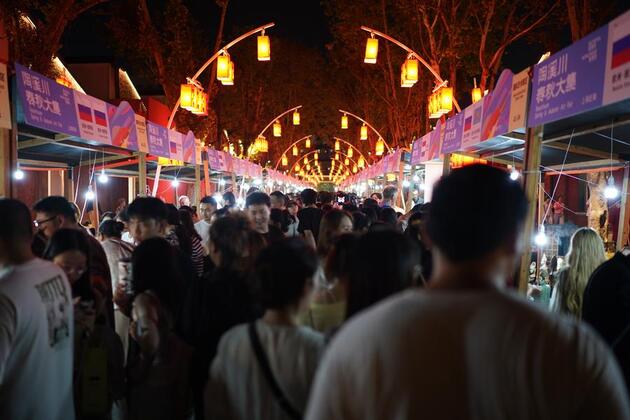Move FM Australian News

Foreign visitors enchanted by magic of “china” from China
Oct 20, 2025NANCHANG, Oct. 20 (Xinhua) — Thirteen years ago, Simone Haak, a ceramic artist from the Netherlands, thought Jingdezhen would be just another stop on her artistic journey, but 20 visits later, the porcelain capital of China has become her second home.
This autumn, Haak returned to the city in east China’s Jiangxi Province for an international art fair at Taoxichuan, an industrial heritage complex reborn as a creative hub.
The event, held from Oct. 17 to 19, featured 450 booths of foreign artists, many of whom, like her, were returning participants.
Haak didn’t come alone. She brought several groups of artists with her to Jingdezhen, a city she describes as a rare blend of tradition and modernity, and one of the few places where “artists can find everything they want” thanks to its fully integrated porcelain-making industry.
Home to around 1.6 million people, Jingdezhen has a ceramics history that spans over two millennia. For centuries, the most coveted “china” from China came from this city, shaped from clay, fired in its famed kilns and carried across the world.
Its name became synonymous with porcelain itself. This year, Haak’s journey was made easier by something new: visa-free entry.
China has steadily expanded its visa-free travel policies in recent years. Tourists from 76 countries are now able to benefit from unilateral or mutual visa-free entry, while citizens of 55 countries can visit China visa-free in transit for up to 10 days, before traveling on to a third destination.
This has made it easier for artists to visit Jingdezhen. For Hyehyeon Kwon, an artist from the Republic of Korea, the city itself is a source of inspiration.
“I felt like I had stepped into a paradise for ceramics,” she said. “You can see ceramic elements everywhere, even the street lamps are made of porcelain, and many walls are decorated with ceramic fragments.”
“Many local families are connected to ceramics in one way or another, and it’s a place where you can gain a truly comprehensive understanding of the craft,” said Lim Sang Choon from Singapore.
In the first nine months of 2025, Jingdezhen recorded 124,700 inbound trips by overseas tourists, a 36.83 percent year-on-year increase. Inbound tourism revenue reached 73.61 million yuan (about 10.3 million U.S. dollars), up 44.16 percent from a year earlier, according to the city’s culture and tourism bureau.
To make foreign travelers feel at home, the city has introduced a series of measures to smooth their journey, said Wang Yao, deputy director of the bureau.
A multilingual mini program now provides navigation, ticketing and booking services. Overseas card payments are accepted at 917 stores, hotel registration has been simplified, and seven tax refund stores operate in the city, Wang added.
Zhang Bei, product manager at Jingdezhen Taoxichuan International Travel Service Co., Ltd., said most inbound visitors come from Australia, the Americas and Europe, with Australian and French tourists making up the largest groups.
She has also observed a clear shift in their preferences. “Compared with conventional sightseeing tours, foreign travelers are increasingly drawn to smaller cities and seeking deeper cultural experiences,” Zhang said.
One of the most popular activities is fingertip ceramic making, in which visitors craft tiny porcelain pieces no larger than a fingernail, paint them afterward, and take them home as souvenirs.
“They’re curious about the reasons behind certain techniques, the history of craftsmanship and cultural heritage,” she said.
For Haak, Jingdezhen is more than a destination; it’s a creative hub, a cultural bridge and a place where lasting friendships are built.
When asked if she would recommend China to others, she laughed. “I always do,” she said. “I said it’s very dangerous to go to China because when you once have been, you get addicted and you want to go back every time.”


